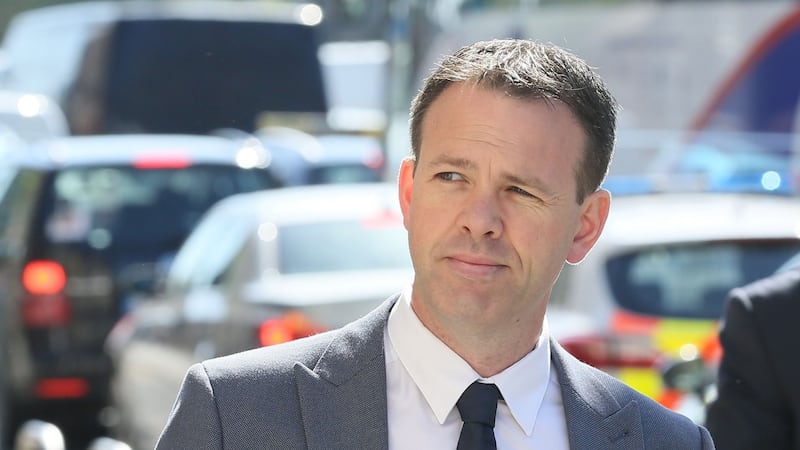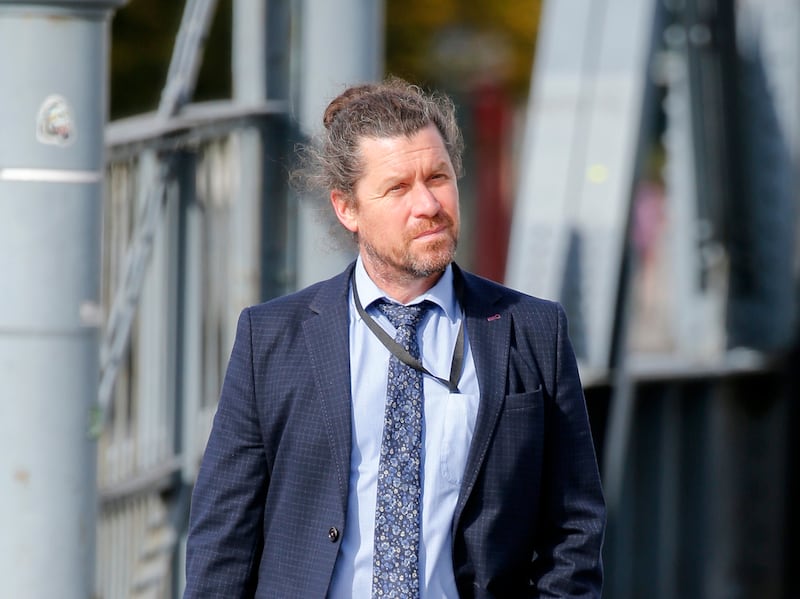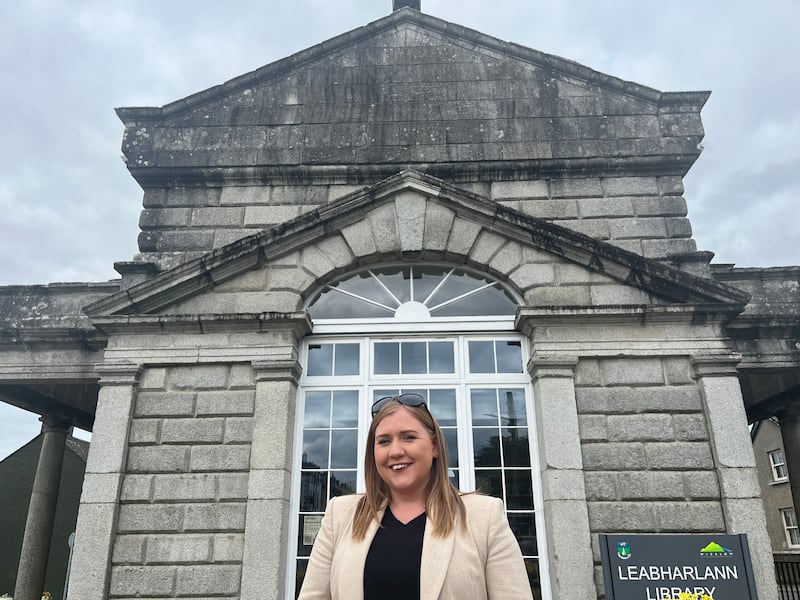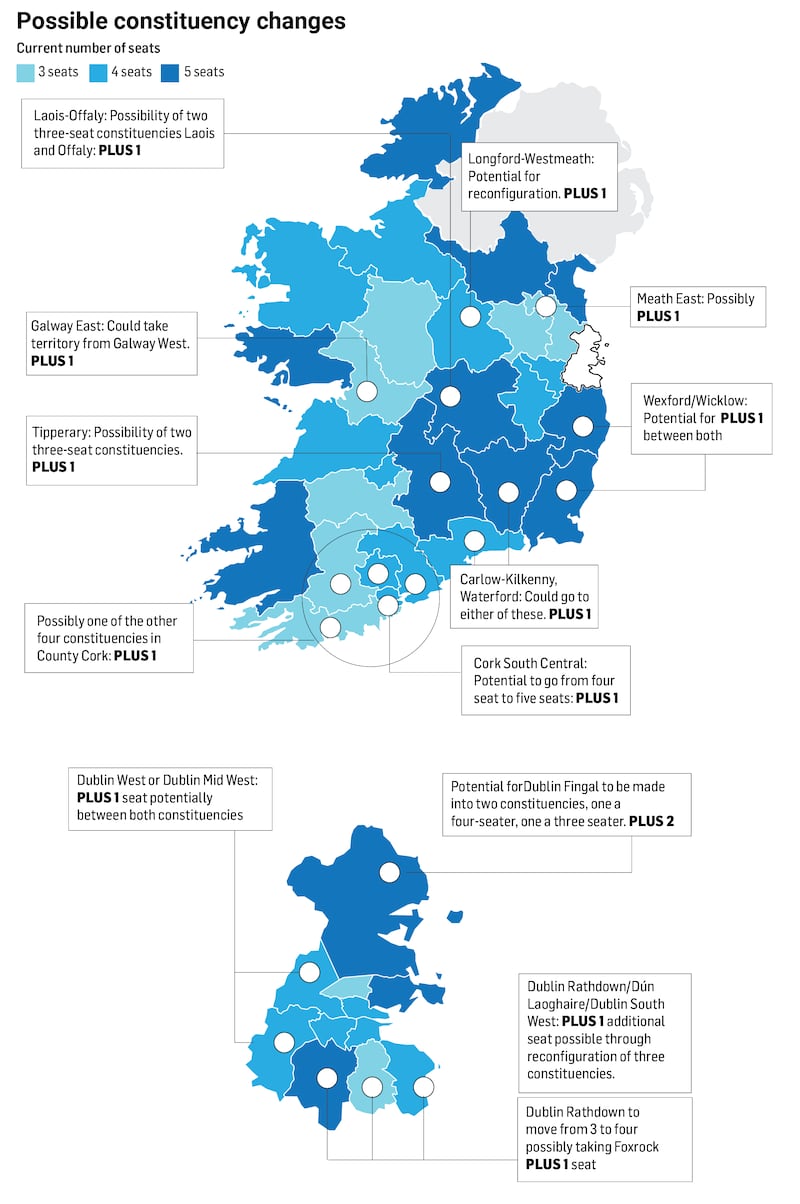“We still call it a village,” says Jennifer Whitmore, the Social Democrats TD for Wicklow. “It still has a village feel and that sense of community, but it has grown considerably.”
The “village” Whitmore is talking about is Greystones, one of the fastest growing towns in one of the fastest growing counties in the State. Last year’s census recorded the population of Greystones-Delgany as having topped 22,000 (up 4,000 from 2016). It is now of a size comparable with Mullingar, Letterkenny and Wexford, in other words the village has become a large town.
“We have welcomed an awful lot of new people into the community,” says Whitmore. “There are people from overseas, people from Dublin who are moving down. It’s a fantastic place to bring up children. You have the sea and the mountains, and it has that sense of community.”
Whitmore, a TD since 2020, agrees that growth is now reaching pressure cooker intensity. There are pressures on sprawl, planning, house prices, affordability, school places, traffic congestion and public transport.
RM Block
“We are now one of the most expensive places in the country to buy and rent. One area where people are suffering is that new buyers who grew up in the town have to move outside to get housing,” she says.
It is a similar story in Bray, where Sinn Féin TD John Brady is based. “The latest census figures show the growth of the county, predominantly in the north of the county, in Bray and Greystones as far down as Wicklow town.”
Brady says congestion on the N11 Wexford to Dublin road has returned to pre-pandemic levels and that public transport is struggling to cope with the demands.
[ Ireland’s new electoral map: How constituency reforms may impact your countyOpens in new window ]

The population of Co Wicklow stood at 155,851 last year (up 9 per cent since 2016), with most settlements in the north and along the coast. The mountains that dissect the county on a north-south axis are sparsely populated and create a natural barrier between the east and rural west Wicklow. The south, including the port town Arklow, also seems to be a place apart.
It makes sense that most of Wicklow’s five TDs would come from the north. In the 2020 general election all five successful candidates came from in or around the Greystones or Bray areas. Alongside Brady and Whitmore are two Ministers - Minister for Health Stephen Donnelly (Fianna Fáil) and Minister for Higher Education Simon Harris (Fine Gael) - and Green Party TD Stephen Matthews.
While all five say they represent the whole country, the reality is they all have bases in the built-up areas which, in some ways, are not unlike south Dublin suburbs (especially liberal, well-to-do Greystones).

The constituency is set to change. The form that it takes will be revealed by the Electoral Commission on Wednesday. Wicklow has too big a population to have just five TDs but not enough for six. So it’s going to have to cede territory to another county (Wexford, Carlow or Kildare) or gain some ground from, most likely Wexford, to form two three-seaters.
The consensus among the politicians spoken to was that Wicklow will probably remain as a five-seater, with either the south of the country going into a new North Wexford-South Wicklow three-seater, or the West of the country being put in with either Carlow (for a new three-seater) or an expanded South Kildare.
If Wicklow remains as a five-seater, it would mean the geographical spread of the five TDs may no longer seem so narrow, and it might better mirror the population distribution. If it becomes two constituencies, some of the sitting TDs will have to take the hard decision to migrate south away from their bases or face being squeezed.
[ Donegal: Sinn Féin focused on gains as constituency may grow to six seatsOpens in new window ]
In every conceivable scenario, Matthews’s seat is considered the most vulnerable with Sinn Féin being pencilled in by most commentators as a Napoleon (Nap) for a second seat.
But what of the forgotten rural areas on the far side of the mountain? Avril Cronin, a Fine Gael councillor from Dunlavin, says the mountain divide makes Wicklow “a unique constituency”.

“It’s a lot more rural in the west. We don’t have the same services, transport links or road infrastructure,” she says, noting that upgrades have for years been promised for the N81 road which starts near Tullow and runs through west Wicklow into Dublin.
Cronin feels that the west of the county has not benefited to the same extent as the more populated east and north, arguing that the absence of a truly local TD has been a drawback and created a view “that there is nobody in the rural area representing them at national level”.
After an unsuccessful tilt in the 2020 general election, Cronin is undecided as to her intentions for the next one. The question is which constituency would she stand in?
“Previously the constituency was Wicklow-East Carlow. We were with Hackettstown and Rathvilly. I do believe we have a lot in common with those areas.”

Current state of play:
Constituency: Wicklow
Current number of seats: Five
Sitting TDs: John Brady (SF); Stephen Donnelly (FF); Simon Harris (FG); Stephen Matthews (GP); Jennifer Whitmore (SD).
Population Census 2016: 142,425
Population Census 2022: 155,581 (up 9 per cent)
Population per Dáil member 2022: 31,115
Issues on the ground: Housing shortage, public transport, school places, traffic congestion, road infrastructure.
Options: One constituency of five seats could be retained albeit with parts of either south Wicklow or west Wicklow moving to other constituencies. A less likely chance of two three-seat constituencies taking in parts of north Wexford.




















